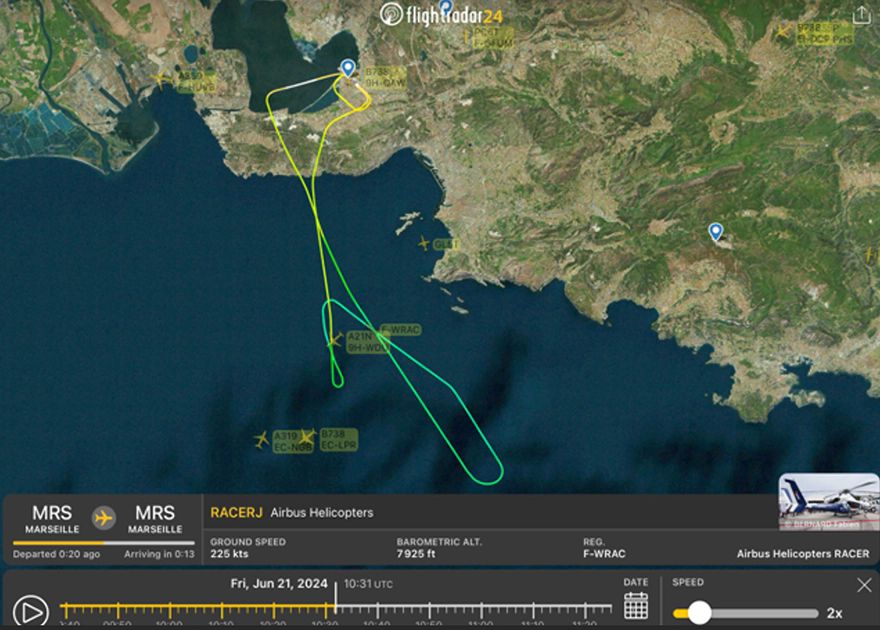 Photo: Flightradar24Airbus’s
Photo: Flightradar24Airbus’s Racer high-speed helicopter demonstrator, developed in the frame of the
European Research Clean Sky 2 project, has reached its cruise speed target of 407km/hr. On 21 June, less than two months after its first flight, the Racer demonstrator exceeded its level speed objective of 407km/hr by reaching 420km/hr in its initial configuration. In just seven flights and 9hr of flight testing, almost all of the flight envelope has been opened.
Bruno Even, CEO of Airbus Helicopters, said: “This achievement in such a short space of time is really a testimony to the hard work of our 40 partners in 13 European countries to bring all of this innovation to flight. On top of its performance, the aircraft’s aerodynamic behaviour and stability are promising. We are all looking forward to the next phase of flight testing, especially the eco-mode which will enable us to shut down one engine in forward flight, thus reducing fuel consumption, and lowering the CO
2 emissions.”
The next phase of flight testing will focus on single engine operations and finalise the flight envelope. Optimised for a cruise speed of more than 400km/hr, the Racer demonstrator aims to achieve the best trade-off between speed, cost-efficiency, and mission performance. The Racer also targets a fuel consumption reduction of around 20%, compared to current-generation helicopters in the same maximum take-off weight category, thanks to aerodynamic optimisation and an innovative eco-mode propulsion system.
Developed with
Safran Helicopter Engines, the hybrid-electrical eco-mode system allows one of the two Aneto-1X engines to be paused while in cruise flight, thus contributing to cutting CO
2 emissions. The Racer also aims to demonstrate how its particular architecture can contribute to lowering its operational acoustic footprint.